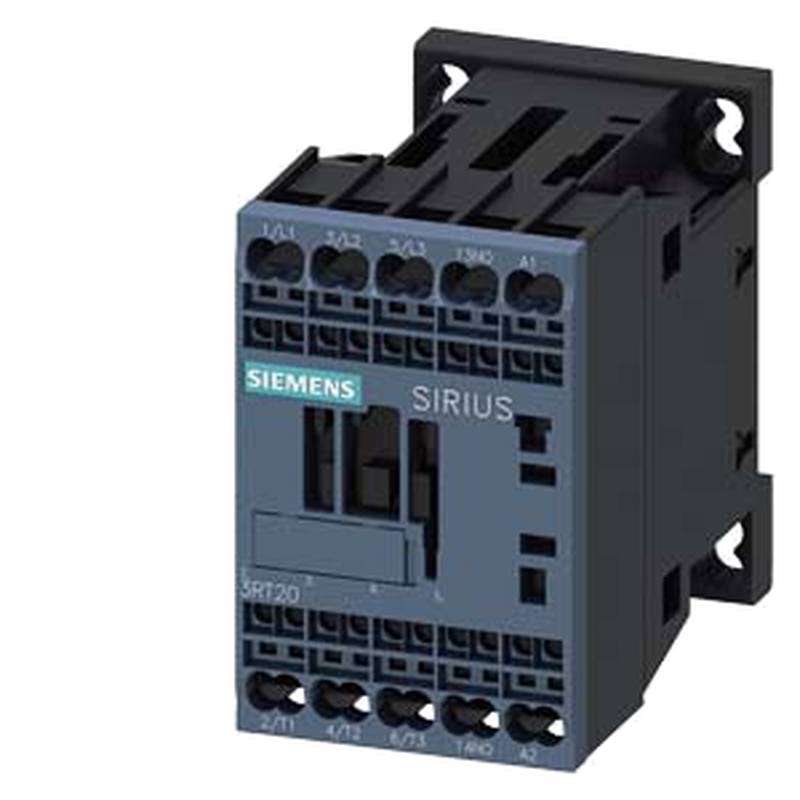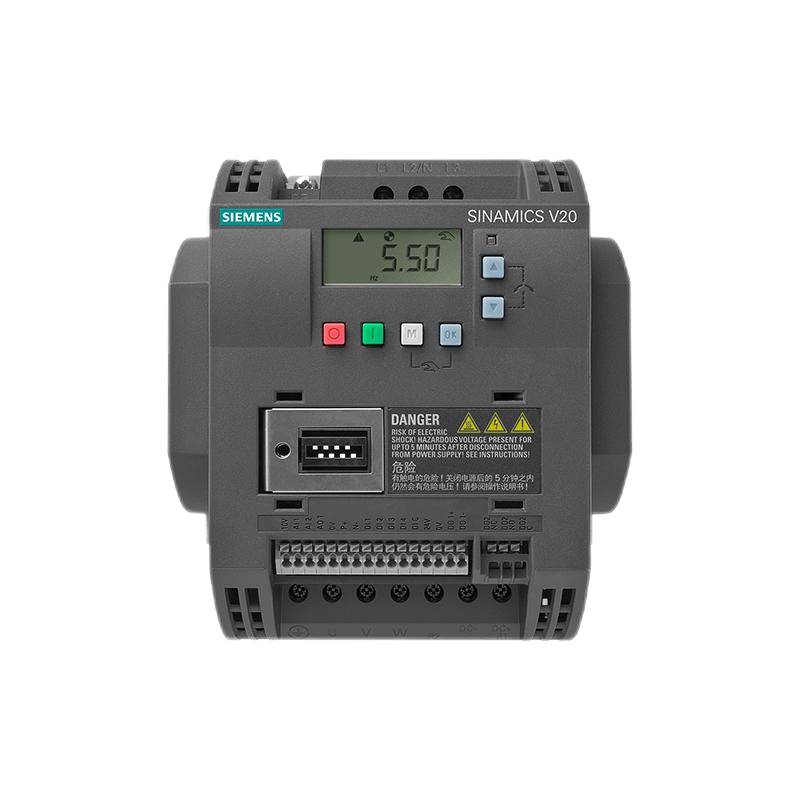
The Siemens 5SU9356-1CN20 RCBO is an advanced Earth Leakage Protection Switch designed for robust safety and reliability in industrial and commercial electrical installations. This 20A, 30mA, 1P+N (single-pole plus neutral) device integrates overcurrent and earth fault protection into a single unit, offering significant space and wiring savings. Its Type C tripping characteristic ensures it can handle inrush currents common in inductive loads without nuisance tripping, making it ideal for protecting circuits with motors, transformers, and fluorescent lighting. The compact design and high breaking capacity provide superior protection against electric shock, fire hazards, and equipment damage, positioning it as a superior choice for modern electrical systems.
Product Specifications
| Specification | Value |
| :------------------------ | :----------------------------------- |
| Product Type | RCBO (Residual Current Circuit Breaker with Overcurrent Protection) |
| Manufacturer | Siemens |
| Model Number | 5SU9356-1CN20 |
| Rated Current (In) | 20A |
| Rated Residual Current (IΔn)| 30mA |
| Number of Poles | 1P+N (Single Pole + Neutral) |
| Tripping Characteristic | Type C |
| Rated Breaking Capacity (Icn) | 6 kA |
| Voltage Rating (Ue) | 230/400V AC |
| Frequency | 50/60 Hz |
| Protection Type | Overcurrent and Earth Leakage |
| Installation Type | DIN rail |
| Compliance | IEC/EN 61009-1, IEC/EN 61009-2-1 |
Core Features & Market Positioning
The Siemens 5SU9356-1CN20 excels due to its dual-functionality, consolidating the roles of a Miniature Circuit Breaker (MCB) and a Residual Current Device (RCD) into one compact device. This integration streamlines panel construction, reduces installation time, and minimizes the overall footprint within electrical enclosures. The Type C tripping curve is a key differentiator, providing enhanced immunity to transient overcurrents typically generated by inductive loads such as motors and transformers. This intelligent design prevents unnecessary disconnections, ensuring continuous operation of critical equipment while maintaining stringent safety standards against earth faults. Its robust construction and adherence to international standards like IEC/EN 61009 underscore its reliability and suitability for demanding industrial environments, positioning it as a premium protective device.
Key Application Scenarios
This RCBO is exceptionally well-suited for protecting circuits in commercial buildings, industrial facilities, and specialized applications where both overcurrent and earth leakage protection are paramount. Its 20A rating and Type C curve make it ideal for safeguarding motor control circuits, HVAC systems, and lighting installations that experience significant inrush currents. In workshops and manufacturing plants, it effectively protects machinery and personnel from electrical hazards, preventing damage and ensuring operational continuity. Furthermore, its application extends to residential complexes and high-rise buildings, providing comprehensive safety for circuits supplying appliances, heating systems, and general power distribution, mitigating risks of electric shock and fires.
Practical System Integration Guidance
Integrating the Siemens 5SU9356-1CN20 RCBO into existing or new electrical systems is straightforward due to its standard DIN rail mounting and clear terminal markings. For installation, ensure the main power supply is de-energized. Connect the line conductor to the designated "L" terminal and the neutral conductor to the "N" terminal. The load conductors are then connected to the corresponding output terminals. The device's 1P+N configuration means it switches both the phase and neutral conductors, providing complete isolation during fault conditions. Proper grounding of the protected circuit is essential for the earth leakage protection function to operate effectively. A visual inspection of all connections before re-energizing the circuit is a critical step in ensuring safe and reliable operation.
Operation and Risk Mitigation
The 5SU9356-1CN20 operates by continuously monitoring the balance of current flowing through the phase and neutral conductors. If an imbalance exceeding 30mA occurs, indicative of current leaking to earth (often through a person), the RCBO rapidly trips, disconnecting the power supply within milliseconds to prevent severe injury or fire. The Type C characteristic ensures it will not trip for temporary overcurrents that are typically 5 to 10 times the rated current, common during motor start-up. In case of overcurrent faults, such as short circuits or overloads beyond the 20A rating, the internal overcurrent protection mechanism triggers a trip. Regular testing using the integrated test button (typically marked 'T') is crucial to verify the residual current tripping function, ensuring the device remains operational and protective.
Scalability & Long-Term Value
The modular design of Siemens' electrical protection devices, including the 5SU9356-1CN20, offers significant scalability and long-term value. It seamlessly integrates with other Siemens components within the SIVACON or SENTRON product families, allowing for easy expansion and modification of electrical distribution boards. This compatibility ensures that as system requirements evolve, such as increased load demands or the addition of new circuits, the protective infrastructure can be readily adapted without necessitating a complete overhaul. For facilities embracing Industry 4.0, these devices can be incorporated into smart electrical systems, potentially linking with energy monitoring and management platforms for enhanced operational insights and predictive maintenance capabilities.
Frequently Asked Questions
What is the primary function of a Siemens 5SU9356-1CN20 RCBO?
The Siemens 5SU9356-1CN20 RCBO serves a dual protective role in electrical systems. It combines the overcurrent protection features of a miniature circuit breaker (MCB) with the earth leakage detection capabilities of a residual current device (RCD). This means it safeguards circuits from both dangerous overloads and short circuits, as well as providing crucial protection against electric shock caused by earth faults.
Why is the 'Type C' tripping characteristic important for this RCBO?
The Type C tripping characteristic is designed to provide enhanced immunity against nuisance tripping from inductive loads. These loads, such as motors, transformers, and fluorescent lighting, often generate significant inrush currents when they are switched on. A Type C breaker will tolerate these temporary current surges, allowing the equipment to start up normally without causing an unnecessary power interruption.
What are the key technical specifications of the Siemens 5SU9356-1CN20?
This RCBO is rated for 20 Amperes (A) and designed to detect earth leakages at 30 milliAmperes (mA). It operates on a single-pole plus neutral (1P+N) configuration, suitable for 230/400V AC circuits, and features a breaking capacity of 6 kA. It adheres to international standards like IEC/EN 61009, ensuring high quality and reliability.
How does the 30mA residual current sensitivity protect against electric shock?
The 30mA sensitivity is a critical safety feature for personal protection. If a fault occurs, causing current to leak to earth and pass through a person, the RCBO detects this imbalance of 30mA or more. It then rapidly disconnects the power supply, typically within 30 milliseconds, before a lethal electric shock can occur.
Can the Siemens 5SU9356-1CN20 be used in residential applications?
Yes, the 5SU9356-1CN20 is suitable for residential applications, particularly for circuits supplying appliances, lighting, and heating systems. Its combination of overcurrent and earth leakage protection provides comprehensive safety for households, preventing fires and protecting occupants from electrical hazards.
What is the advantage of a 1P+N RCBO over a standard MCB or RCD?
A 1P+N RCBO offers the advantage of integrating two essential protective functions into a single device. This integration saves space in electrical panels, simplifies wiring, and reduces installation time compared to using separate MCBs and RCDs. It also ensures that both the phase and neutral conductors are switched, providing complete isolation.
How do I perform a test on the Siemens 5SU9356-1CN20 RCBO?
To test the functionality of the RCBO, locate the test button, typically marked with a 'T'. With the circuit energized, press the test button. The RCBO should trip, indicating that both the overcurrent and residual current protection mechanisms are functioning correctly. Perform this test periodically as part of maintenance.
What is the breaking capacity of this RCBO and why is it important?
The Siemens 5SU9356-1CN20 has a rated breaking capacity of 6 kA. This specification indicates the maximum fault current the device can safely interrupt without sustaining damage. A higher breaking capacity is crucial in industrial and commercial settings where fault currents can be significantly higher, ensuring the device can effectively protect the circuit and prevent catastrophic failure.
Is this RCBO compatible with Siemens' broader electrical product range?
Yes, the 5SU9356-1CN20 is part of Siemens' extensive SENTRON and SIVACON product families. This ensures excellent compatibility with other Siemens circuit breakers, contactors, and switchgear components, facilitating seamless integration into larger, more complex electrical distribution systems.
What troubleshooting steps can I take if the RCBO trips frequently?
Frequent tripping usually indicates a persistent issue, not a faulty RCBO. First, determine if it's an overload trip (indicated by consistent tripping under normal load) or an earth leakage trip. For overload, check if the load exceeds the 20A rating. For earth leakage, inspect all wiring and connected appliances for insulation damage or faults.























